eBook 3: Chapter 1
Introduction
 eBook 3 "Starting Your CM Implementation," the third eBook in Woodlands Health’s (WH) Crisis Management (BCM) series.
eBook 3 "Starting Your CM Implementation," the third eBook in Woodlands Health’s (WH) Crisis Management (BCM) series.
This guide is designed to help you embark on or update your CM journey, taking you step-by-step through the four critical phases of the CM planning methodology: Crisis Risk Analysis and Review (CRA), Business Impact Analysis (BIA), Crisis Management Strategy (CMS), and Plan Development (PD).
The foundation for this eBook has been laid by two previous works: eBook 1, "Understanding Your Organisation", and eBook 2 ", Implementing CM Planning Methodology." These pre-reading materials provided essential insights into understanding WH’s operations and CM methodology, creating a robust framework for this more detailed guide.
Now that the foundational knowledge is in place, it’s time to delve deeper into the specific requirements of each CM phase.
As you work through this eBook, you will engage in a comprehensive CM planning exercise that covers a range of activities and templates crucial to ensuring your institution's resilience in the face of disruptions.
By progressing into eBook 3, readers and practitioners now drill down into the specific requirements and deliverables for each phase of the CM planning methodology.
This eBook is not just a theoretical guide—it’s a practical tool that mirrors an actual BCM project, offering a hands-on approach to the CM planning process.
Purpose of This eBook
This eBook serves as a compilation and reference document for the CM submissions produced by the Singapore Institute of Technology during its CM planning exercise.
Each section captures the completed templates and outputs from the CAR, BIA, CMS, and PD phases, enabling structured progress tracking and facilitating future updates.
The purpose of publishing this eBook as part of Woodlands Health's CM eBook Series is twofold:
- For Organisations: It provides a practical reference that supports organisations, such as SIT, in executing a CM project, whether initiating a new program or enhancing an existing one.
- For Practitioners: It complements the learning journey of professionals attending CM Institute’s certification or competency-based training. The eBook is a value-adding resource that bridges theory and implementation, enabling participants to apply concepts to real-world organisational settings.
The Four Phases of CM Planning
The content of this eBook 3 "Starting Your CM Implementation", drills down into the specific requirements for each phase of the CM planning methodology.
The four phases of the BCM planning methodology are
- Crisis Scenario Risk Assessment (CRA)
- Business impact analysis (BIA)
- Crisis Management Strategy (CMS)
- CM Plan Development (PD)
In the Crisis Scenario Risk Analysis and Review (RAR) phase, the content includes the completion of these three templates:
- Part 1: CRA – List of Threats for OCBC Bank [1] Natural and [2] Technological
- Part 1-2: CRA- List of Crisis Scenarios
- Part 1-3: CRA- List of Crisis Scenarios (Technology Threats)
- Part 2: CAR – Treatment and Control
- Part 3: Risk Impact and Likelihood Assessment
The CM is expected to liaise with the Business Continuity Management team regarding the BIA Report. During the business impact analysis (BIA) phase, six-part templates are completed for each critical business function.
- Part 0: Corporate MBCO & Product and Services [MBCO] [P&S]
- Part 1: Identification of Business Functions [BIAQ T1]
- Part 2: Impact Areas of Business Functions [BIAQ T1]
- Part 3: Impact Over Time of Business Functions [BIAQ T2]
- Part 4: Supporting IT Systems and Applications [BIAQ T2]
- Part 5: Inter-dependencies [BIAQ T3]
- Part 6: Vital Records [BIAQ T3]
In the Crisis Management Strategy (BCS) phase, each critical business unit involved in the crisis management scenario will have the following requirements presented:
- [CMS] [T1] Crisis Prevention Strategy
-
[CMS] [T2] Crisis Response Strategy
In the plan development (PD) phase, detailed crisis management plan procedures [PD Crisis Scenario] will be developed for the CM team and the respective business units of the organisation, based on the specific processes for each function.
This eBook is a compilation of submissions on CAR, BIA, BCS, and CM Plan Development (PD) by an organisation during a crisis management planning exercise.
Crisis Scenario of Woodlands Wealth
|
S/No |
Crisis Scenario |
Description |
Potential Impact on Woodlands Health |
|
1 |
Natural |
Events such as pandemics, extreme weather, or infectious disease outbreaks can have significant impacts. |
Strain on medical resources, disruption of care services, risk to patient and staff safety, overflow of emergency and inpatient facilities. |
|
2 |
Technological |
Failures in IT systems, medical equipment, or cybersecurity breaches. |
Delay in diagnosis/treatment, loss of critical patient data, inability to operate essential systems, and reputational damage. |
|
3a |
Organisational Misdeeds – Skewed Management Values |
Decision-making priorities that conflict with patient safety or ethics. |
Compromised care quality, erosion of staff morale, and public criticism. |
|
3b |
Organisational Misdeeds – Deception |
Concealment or manipulation of outcomes or reporting. |
Loss of regulatory trust, reputational damage, and legal action. |
|
3c |
Organisational Misdeeds – Management Misconduct |
Breaches of laws, regulations, or ethics by leadership. |
Regulatory penalties, leadership instability, reputational harm. |
|
4 |
Confrontation |
Disputes with unions, community groups, or government bodies. |
Service disruptions, strained stakeholder relationships, negative media coverage. |
|
5 |
Malevolence |
Acts intended to harm WH, such as sabotage, arson, or cyberattacks. |
Disruption of operations, safety risks to patients and staff, and financial loss. |
|
6 |
Workplace Violence |
Physical harm, threats, or intimidation in the workplace. |
Injury to staff or patients, fear among the workforce, and operational instability. |
|
7 |
Rumours |
Spread of misinformation about the WH or its services. |
Public panic, erosion of trust, and increased demand on communication resources. |
|
8 |
Lack of Funds |
Financial shortfalls from reduced funding, unforeseen costs, or mismanagement. |
Reduced service availability, deferred maintenance, and staffing challenges. |
This eBook is part of the BCM Institute’s commitment to providing value-adding and complementary services to organisations, helping them implement or upgrade their CM programs.
It is beneficial for those undergoing CM certification or competency-based training courses at the BCM Institute.
By applying this methodology, you will not only develop a tailored CM plan for your institution but also enhance the resilience and continuity of your operations, ensuring SIT is better equipped to prepare for potential disruptions.
As you progress through each phase, remember that CM is an ongoing process of planning, testing, and improving.
This eBook serves as a guide to help you navigate that journey, ensuring your institution’s continuity strategies are robust, actionable, and aligned with your organisational goals.
More Information About Crisis Management Blended/ Hybrid Learning Courses
To learn more about the course and schedule, click the buttons below for the CM-300 Crisis Management Implementer [CM-3] and the CM-5000 Crisis Management Expert Implementer [CM-5].





![CM [E2] [C3] Crisis Scenario Risk Assessment](https://no-cache.hubspot.com/cta/default/3893111/5c56f166-e1a5-4c2a-b813-40f131aa2a6b.png)
![CM [E2] [C4] Business Impact Analysis](https://no-cache.hubspot.com/cta/default/3893111/ec5ab724-45df-4b48-bd28-7b4656fe1747.png)
![CM [E2] [C5] Crisis Management Strategy](https://no-cache.hubspot.com/cta/default/3893111/6d508c86-1365-4f3e-ae01-a280969f6e49.png)

![[BCM] [Thin Banner] Summing Up](https://blog.bcm-institute.org/hs-fs/hubfs/BCM%20Generic%20Banner/%5BBCM%5D%20%5BThin%20Banner%5D%20Summing%20Up.png?width=1920&height=250&name=%5BBCM%5D%20%5BThin%20Banner%5D%20Summing%20Up.png)





![[BL-CM] [5] Register](https://no-cache.hubspot.com/cta/default/3893111/82024308-16f4-4491-98be-818a882c6286.png)

![Email to Sales Team [BCM Institute]](https://no-cache.hubspot.com/cta/default/3893111/3c53daeb-2836-4843-b0e0-645baee2ab9e.png)





